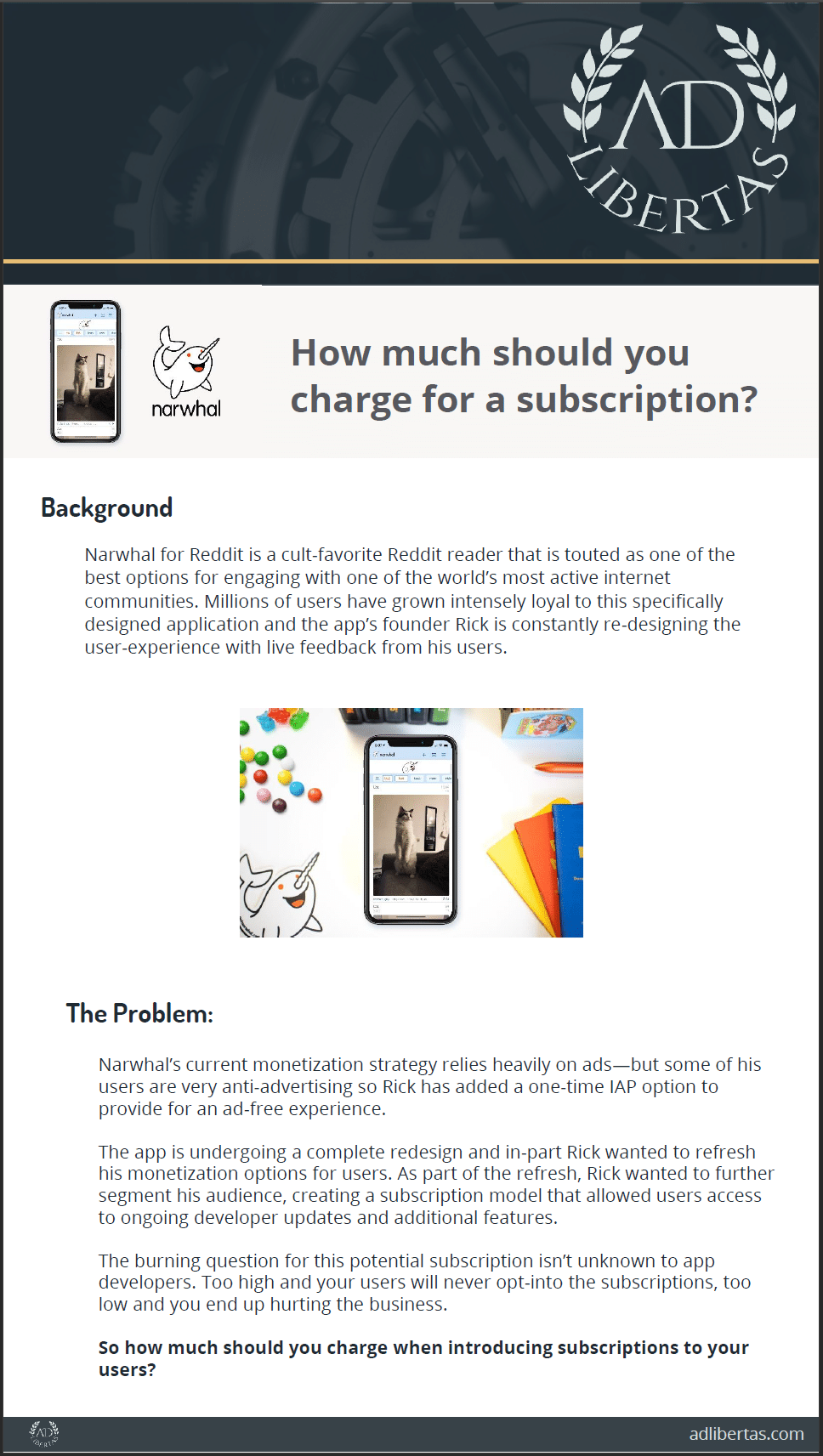Case Study: How much should you charge for a subscription?
Case Study: How much should you charge for a subscription?
Background:
Narwhal for Reddit is a cult-favorite Reddit reader that is touted as one of the best options for engaging with one of the world’s most active internet communities. Millions of users have grown intensely loyal to this specifically designed application and the app’s founder Rick is constantly re-designing the user-experience with live feedback from his users.
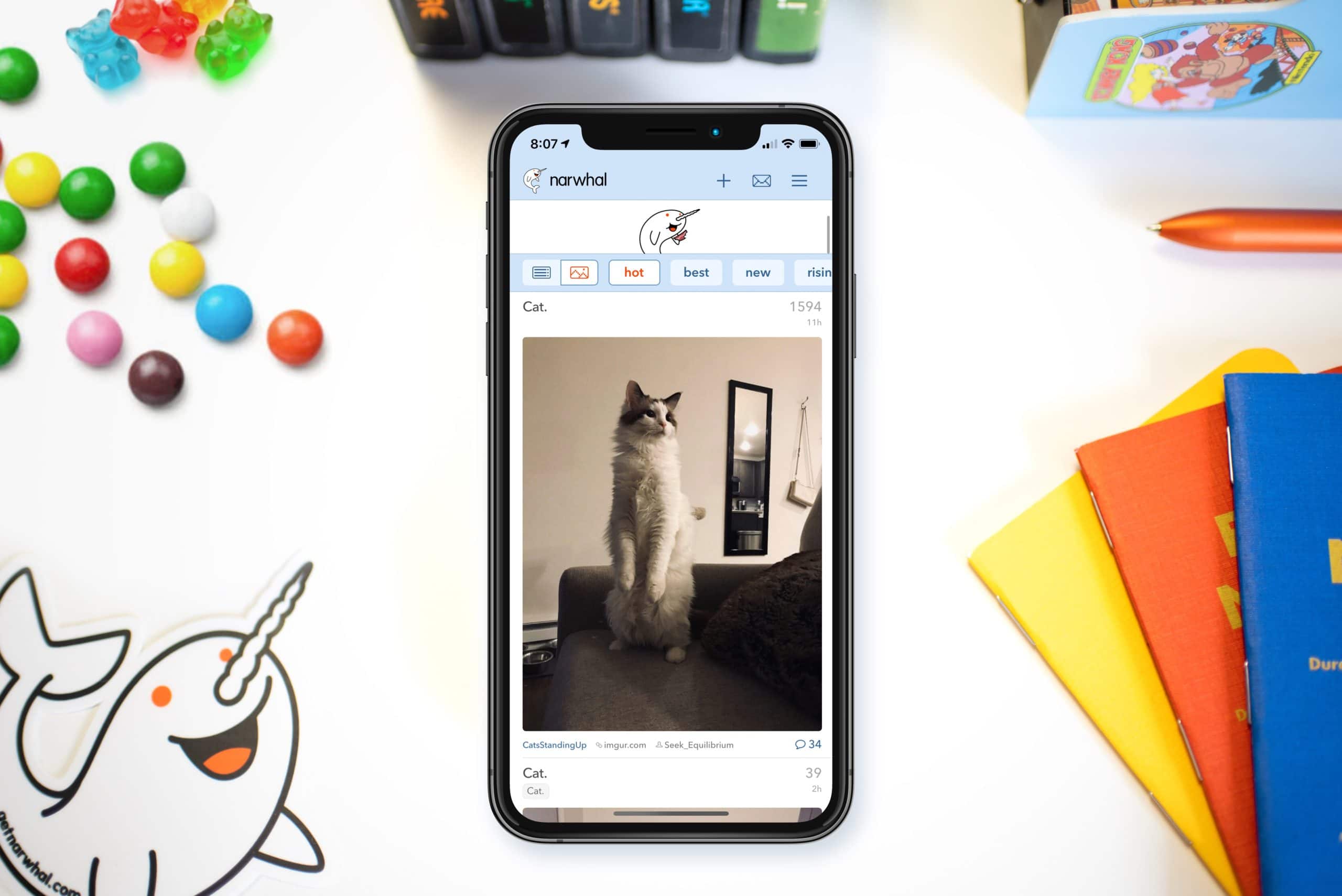
The Problem:
Narwhal’s current monetization strategy relies heavily on ads—but some of his users are very anti-advertising so Rick has added a one-time IAP option to provide for an ad-free experience.
The app is undergoing a complete redesign and in-part Rick wanted to refresh his monetization options for users. As part of the refresh, Rick wanted to further segment his audience, creating a subscription model that allowed users access to ongoing developer updates and additional features.
The burning question for this potential subscription isn’t unknown to app developers. Too high and your users will never opt-into the subscriptions, too low and you end up hurting the business.
So how much should you charge when introducing subscriptions to your users?

“We make most of our money through advertising but I’d like to offer the ad-free experience to more users but I have no idea on where to set a price that will be fair.”
Rick Harrison, Co-Founder, Narwhal
The Solution
Narwhal for Reddit turned to AdLibertas Audience Reporting to help him make the right decision. By using Audience Reporting to split users by their actions, measure their retention and revenue-performance over time, then use LTV forecasting he was able to uncover some very surprising findings:
(DAU / Revenue) is NOT a good method for estimating an LTV. It turns out – like most apps—some user is heavily skewed to when they have just downloaded the app. Therefore using averages to determine LTVs was wrong because a disproportionate amount of the revenue was earned by a subset of users
Narwhal users are really loyal: More than 75% of users who make it Day 7 are active for at least 30 days. Very often they were still very active 4 years later.
This means the long-term LTV earnings of a non-purchasing is (eventually) more than a purchasing user, especially if they are daily users over several years
Purchasing users may make less over their lifetime, but they earn their lifetime within 10 days.
Yearly subscriptions could be the best of both worlds: A one-time high-cost purchase can be daunting. Currently the cost must equate to the user’s lifetime value, but to a high-quality app like Narwhal for Reddit this might seem an awfully high price to a user upon install. Subscriptions can break this cost into yearly increments, and if the cost at year one is slightly higher than ad revenue within that year it could actually incent more users to purchase, increasing overall LTV as well as create a better ad-free user experience – which will likely increasing retention and increasing LTV still further!
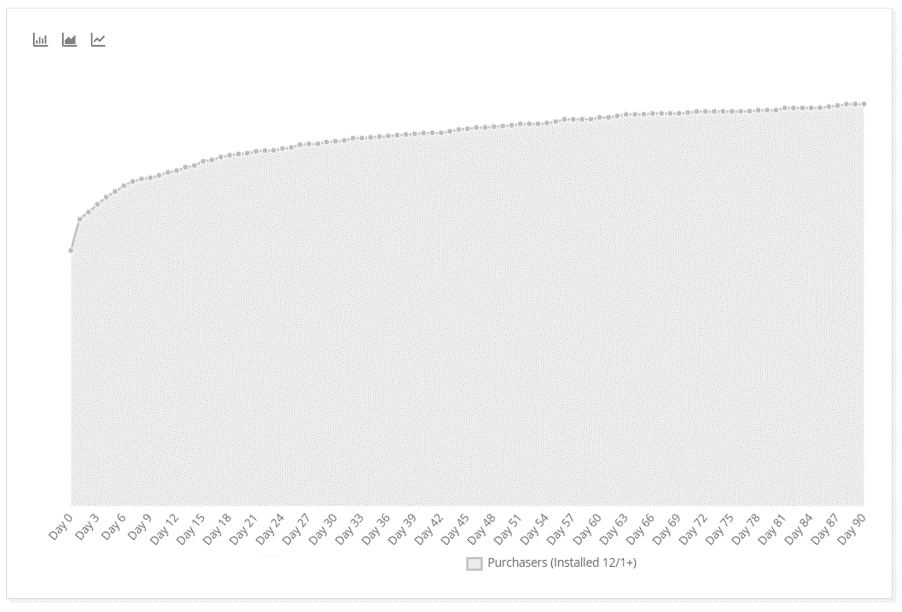
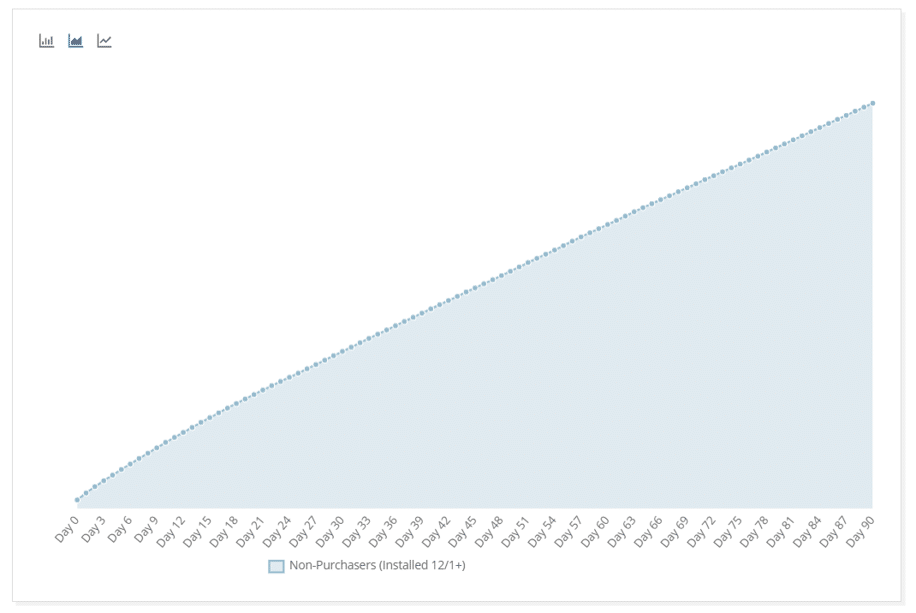
Pretty clearly the LTV curve of folks who purchase (left) cap-out in value early while those who are ad-supported (right) continue to climb in value.
Conclusion:
This analysis led to several key decisions for Rick and his team:
Price the 1-year subscription slightly higher than a year of ad earnings. The data suggests a subscription price could be pegged at just above a 1-year ad-LTV which would likely increase the number of users, create a better experience for those users and increase the retention rate.
Experimentation with continued prompts later in the user journey: users may be willing to pay for an ad-free experience after an initial period of using the app.
Introducing additional IAP and subscription opportunities: given the highly diversified audience and intensely loyal users, Rick has just uncovered the ability to segment his customers and offer increasingly complex and specialized in-app offers and purchases.

“I’ve been using my gut and intuition to make decisions for pricing. Audience Reporting allows me to actually see and rely on the actual data.
I’m making better decisions which allows me to make a better app.”
-Rick
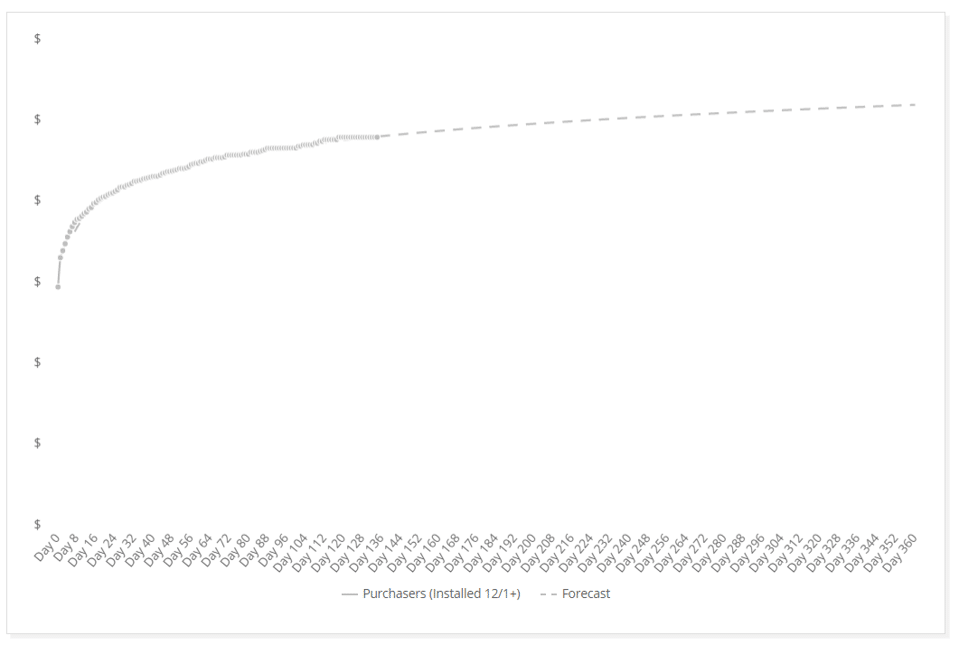
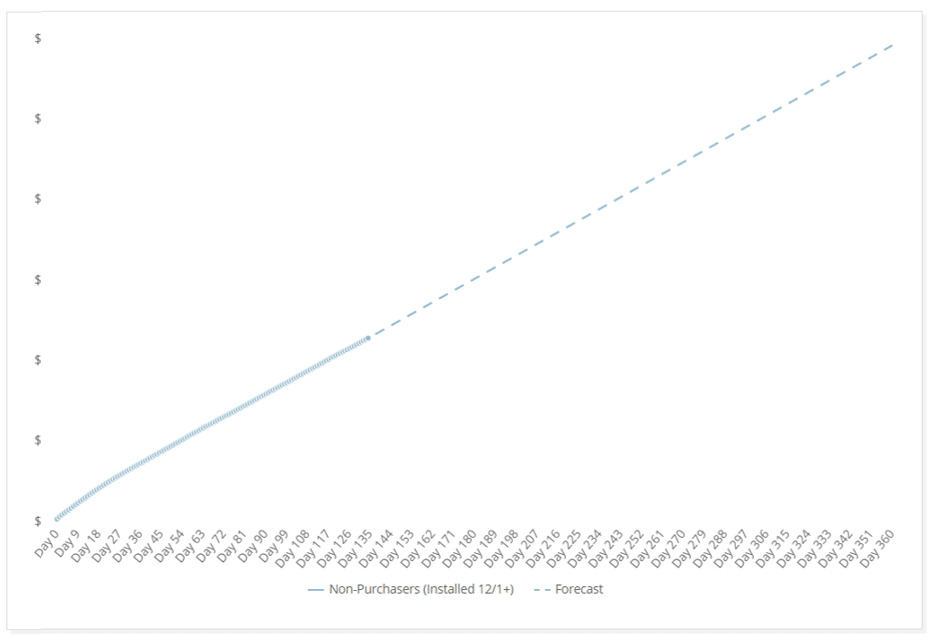
The IAP-users (left) are best predicted using a very conservative Logarithmic model for LTV projection. The highly skewed early curve is best applied when there is a high drop off in user revenue-contribution.
Conversely the ad-supported users (right) uses an aggressive linear (line of best fit) mathematical model for projections. This is because the high amount of retained users and high engagement lead to a very predictable, consistent revenue stream.
Interested in seeing your pLTVs?
